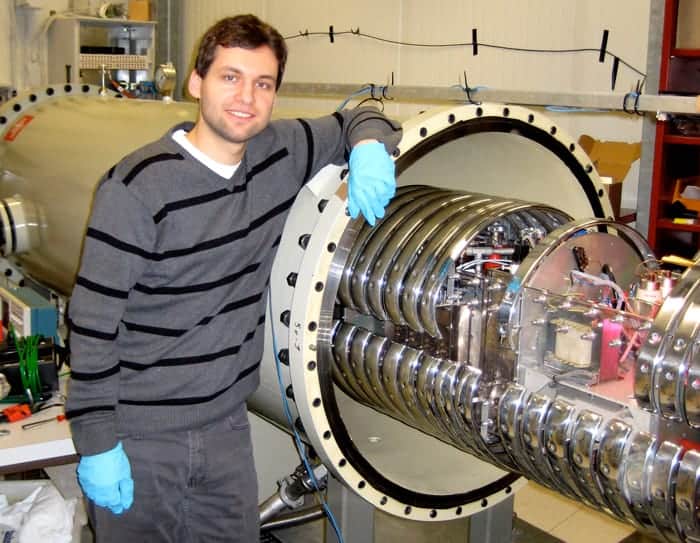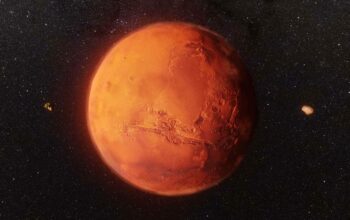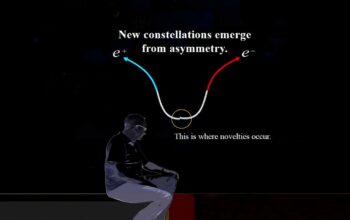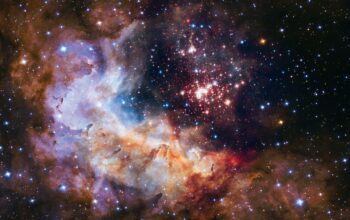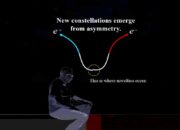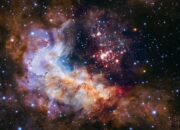The genesis of elements in the cosmos is a fundamental aspect of cosmology and nucleosynthesis, delving into the intricate processes that dictate the formation of matter in the universe. Among the most compelling questions emerges the role of the Big Bang in the synthesis of lithium-6. Recent findings suggest that this element, essential for understanding cosmic chemical evolution, might have origins that diverge from traditional Big Bang nucleosynthesis theories. This revelation provokes an exploration of why lithium-6’s origin is enshrouded in mystery and challenges established models of cosmic formation.
Big Bang nucleosynthesis, a theoretical framework, delineates the formation of light elements in the primordial universe during the first few minutes following the Big Bang. Predominantly, this model accounts for the production of hydrogen, helium, and trace amounts of heavier elements like lithium. Nevertheless, lithium-6’s abundance in the current cosmic inventory does not align neatly with predictions derived from these primordial models, thus complicating the cerulean tapestry of cosmic element formation.
One noteworthy observation arises from the proportions of lithium isotopes in the universe, particularly during stellar evolution and cosmic ray interactions. Observational astrophysics has established that the cosmic abundance of lithium-6 is markedly greater than what would result solely from Big Bang nucleosynthesis models. This discrepancy ignites curiosity and speculation regarding alternative mechanisms of lithium synthesis. It hints at potential astrophysical processes that remain unexplored, emphasizing a need for deeper inquiry into the conditions under which lithium-6 might have formed.
The first alternative hypothesis concentrates on cosmic ray spallation—a process where heavier nuclei are bombarded by high-energy cosmic rays, leading to the fragmentation of these nuclei into lighter elements, including lithium. Early cosmic environments, rich in supernova remnants and galactic winds, may have created conditions favorable for such spallation events. This mechanism could elucidate the observed lithium-6 abundance in older stars and the interstellar medium, providing a scintillation of hope in decoding the elemental enigma that lithium-6 presents.
Another line of investigation considers the role of asymmetrical supernova explosions, where the stratified ejection of nucleosynthetic products leads to localized bursts of lithium-6. During the cataclysmic death of massive stars, the interplay between nucleosynthesis processes and the unique dynamics of the explosion may contribute to the generation of this elusive isotope. Investigating stellar progenitors through observational spectroscopy may yield insights about the conditions conducive to lithium-6 production in varying stellar environments.
The implications of these findings extend beyond merely refining nucleosynthesis models; they resonate through a broader cosmic narrative. The enrichment of lithium-6 in the galaxies invites contemplation about the elemental evolution and the pathways through which matter coalesces in the fabric of the universe. The synthesis of lithium-6 thus stands as a linchpin in cosmological discourse, prompting a re-evaluation of stellar and galactic processes and the physical conditions that influence elemental composition over cosmic time scales.
Each isotopic composition serves as a historical record, chronicling the life cycle of stars and the intricate dance of elemental creation. The study of lithium-6 is not solely an academic pursuit; it epitomizes our desire to trace the origins of our material existence. What was once a mere curiosity among astrophysicists has transformed into a profound investigation into the interstellar synthesis of matter—a conundrum that may lay bare the secrets of our universe.
Moreover, the exploration of lithium-6 repercussions extends into the realm of observational cosmology. By analyzing the chemical signatures in stellar atmospheres and the cosmic microwave background radiation, researchers can glean insights into cosmic history, refining their understanding of the Universe’s formative epochs. The emergent picture illustrates a dynamic interplay between theory and observation, where theoretical models are continuously tested and retested against empirical data.
As our understanding evolves, it challenges previously held misconceptions about elemental synthesis and cosmic evolution. The idea that lithium-6 could arise primarily from processes post-dating the Big Bang accentuates a broader need for meticulous examination of the universe’s composition. This new paradigm compels scientists to ponder: If not the Big Bang, what mechanisms are at work in shaping the abundance of lithium-6, and how do these mechanisms interact with known astrophysical processes?
Ultimately, the journey to uncover the truth surrounding lithium-6’s origins is emblematic of the larger narrative in astrophysics—the continuous quest for knowledge about the building blocks of our universe. Each discovery does not merely solidify our understanding but unfurls new questions regarding the evolution of matter, underpinning a philosophy of relentless exploration and inquiry. As cosmologists embark on this intellectual voyage, the enigma of lithium-6 may well serve as a harbinger of further revelations that could radically alter our grasp of cosmic history, further enriching the tableau of our universe’s evolutionary tale.
